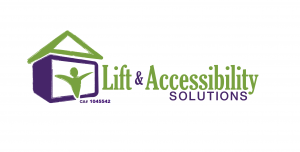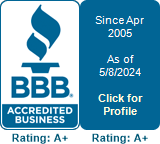21 Jan / 2015
Personal Home Elevator Installation Windsor, CA
Hello, my name is Paul Harlin with Lift and Accessibility Solutions. We’re here at a client’s home in Windsor, California where we recently installed a Stiltz Personal Elevator. Now, the personal elevators have a smaller footprint than a conventional residential elevator, but more importantly they also don’t require a shaft. So we’re not taking near as much of the volume out of a room when we put an elevator like this in the corner of the room.
When I run this elevator up, this is what makes it so special. The only thing that’s going to be left in this room are the two stilts, these triangular supports that the elevator is running up and down on. We can still look out the window, we still have the volume of room in the dining room. We can still sit down and have Thanksgiving dinner which would be next week.
I hope this is a new product that piques your interest. And if you have any questions, please feel free to contact us at the information below.
11 Sep / 2014
Specialty Features For Stair Lifts
Hello, my name is Paul Harlan with Lift and Accessibility Solutions here, at a client’s home in Santa Rosa, California to talk about some of the specialty features that you can add to a stair lift. When you’re not using a stair lift, often we like to have it folded up so it’s out of the way creating more room to get by it on the stair. Folding up the arms and seat are the easiest portions. Sometimes reaching down and pulling up the footrest can be more difficult. One of the features you can add is a power folding footrest.
There are two ways that you would do this. One is to put a switch on the underside of the armrest that you could flip that would bring the footrest up when you want it to. The second and easier way is just to combine that with folding the seat up. As we fold the seat up, the footrest automatically folds up and gives us a nice, sleek profile on the stair lift out of the way leaving plenty of room for others that are traveling up and down the stairs until the lift is needed again.
I hope this is helpful information. Please contact me at the numbers below if you have any questions. Thank you.
01 Sep / 2014
Stair Lift Cleaning & Maintenance
Hello, my name is Paul Harlin with Lift and Accessibility Solutions, here at a client’s home in Santa Rosa, California, to talk about maintenance and cleaning of your stair lift.
Now, like everything in our home, dust will fall on a stair lift, and particularly, on the stair rails where we notice it, just like it does on any of the knick-knacks on your favorite bookcase. The difference being is that dust when the chair rides over it, actually compresses and creates little bumps in the rail and sometimes black streaks that we don’t like to look out or the feel of when we’re riding the chair lift.
To maintain that chair lift, we want to dust it whenever we’re dusting the rest of the home, and we want to clean the rail using just a basic cleaning product that you probably already use in your kitchen like a 409 or a Simply Green. I like to spray the product onto the rag and not on the rail directly. That way I’m not getting it on the wall and leaving discoloration that way, but by… On the rag and simply rubbing the rail down, just like I would any other counter, I get the dust and I get any marks that are built up onto that rail, getting it back to the natural aluminum color, and just a look that that we’re much more comfortable with, a much smoother ride. I hope this is helpful information.
Please feel free to contact me below if you have any questions. Thank you.
26 Aug / 2014
Straight Chair Lift Safety Feature
Hello, my name is Paul Harlin with Lift and Accessibility Solutions, here at a client’s home in Santa Rosa, CA to show you one of the safety features that you can get with a straight stair lift. A straight stair lift, the rail sticks past this bottom nose, usually 16 to 18 inches, and past the top nose, somewhere between eight and 12 inches. Most of the time that’s not a problem, there’s a wall running along that edge, and you never walk there anyway, so not an issue. When we get a scenario where we have a doorway or a walkway at the bottom, like we do at this home, or if we have a door very close at the top of the stairs, that rail sticking past could become a trip hazard, and we need to address that. The last thing we want to do is have someone tripping, particularly at that top, and come tumbling down the stairs.
We need to remove that trip hazard, and this sliding rail is one of the ways it actually removes it at both the top and the bottom. What a sliding rail does, I’m gonna push the remote to kinda simulate riding it, is when the chair starts moving up, and the client would be riding from the bottom, in this case, to the top, the rail underneath it also starts moving. The rail is now moving toward the top, so that by the time the client gets to the top, the rail at the bottom is completely out of the way and is no longer a trip hazard. The reverse is true when the client is riding back down, where the rail slides down, and is available at the bottom, but it’s out of the way at the top. This provides safety for everybody involved as they’re moving and going about their daily lives around this stair lift.
I hope this is helpful information. Please feel free to give me a call if you have any questions.
24 Jul / 2014
Curved Stairlift Options To Consider
Good afternoon, this is Paul Harlin with Lift and Accessibility Solutions at a client’s home here in Santa Rosa where we installed a curved stairlift several months ago.
One of the things that we wanna talk about that with a curved stairlift is we have a lot more options in where we start and stop the chair after it’s gone up and down the stairs. In this particular place, we left the chair stopped just as it got to the bottom of the stairs in what’s called a low intrusion, very close to the stairs’ mount.
We could have also just as easily wrapped that chair around and put it back here where the clock is if the client had preferred to have the chair a little more outside the entry. But since they had enough space and the clock was important, they chose to leave the chair at the bottom of the stairs. Similar options also occur at the top of the stairs where we can actually go past the stairs, go out on the landing, maybe turn a 90 degree corner, and park around behind on a wall; all things that make it easier to get on and off the stairs and also make it easier to carry other things up the stairs because the chair is not in any way impinging on those stairs.
I hope this is helpful information, and if you have any questions, call or comment below. Thank you.
Hello, my name is Paul Harlin with Lift and Accessibility Solutions, and we’re at a client’s home here, in Santa Rosa, California, to talk a little bit about the difference between a straight and a curved stairlift.
Straight stairlifts are actually purchased with approximately 16 feet of track. We need 15 feet on the stair and about a foot that runs past, and we can cut that track to any length we want and install it in a client’s home, as long as their stairs are straight. The cost factor is a lot less on a straight because we’re buying 10 at a time, cutting it to size and installing it in the client’s home.
When we have any other scenario, if we have a landing, if we have a 90-degree switchback, or in this case, when we have a curved set of stairs, we have what’s called a custom stairlift. In this scenario, there’s two things that push the price up to almost four times the number that a straight would cost. One is the fact that the rail is actually custom made for that specific set of stairs. That means we bring the camera and measure out those stairs, send it to the factory, have the rail made and then bring it in and install it.
Number two, the carriage itself has to adjust your seat to always keep it level regardless of what’s happening below you, because when you’re riding on a chair, you don’t want to be sliding back and forth; you wanna sit nice and straight. Since the rail’s changing angle below you, the carriage has to adjust your seat to make that happen. Those two changes between a straight and a curved are what cause the cost to be so much higher for that curved stairlift.
This is Paul Harlin with Lift and Accessibility Solutions. If you have any additional questions please leave a comment below.
09 Jul / 2014
Other Uses For Stairlifts To Support An Active Lifestyle
Hello, this Paul Harlin with Lift and Accessibility Solutions, talking about other uses for our stairlift. None of us like putting a stair lift in or feeling like we’re going to get old, but one of the dangers that we have as we age is balance as we’re traveling up and down the stairs. One of those issues is not just our bodies, but when we have to carry something up and down the stairs. The beauty of a stairlift is, it can do the carrying for us.
The Santa Rosa, CA client whose home I’m in today was getting ready to go on a trip. In the past, she would’ve to carry all of her items downstairs, making multiple trips up and down to pack the heavy suitcase downstairs in the living room so her husband could put it in the car to leave. Now she’s able to pack in her bedroom on her comfortable bed, bring the suitcase over to the chair lift, and let the chair lift carry the heavy suitcase and send it off to the car to leave on their trip.
Just one more thing that you’re able to do with that stairlift; all of us are carrying stuff up and down; it might just be knick-knacks and our books and may be a laptop; we’re all sending laundry up and down the stairs. All types of things that we should use the lift to do the carrying and let our body walk, where we have our best balance and stay safe on those stairs.
This is Paul Harlin with Lift and Accessibility Solutions. If you have any questions or comments, please attach them below. Thank you.
01 Jul / 2014
How Are Stair Lifts Attached?
Hello, my name is Paul Harlin with Lift and Accessibility Solutions. Today we’re at a client’s home here in Santa Rosa, California, to talk about, “How do I attach a stairlift?”
Most people that I talk to say, “I don’t have a wall. I’ve only got a nice banister at the bottom of my stairs. How am I going to put a stairlift in for my parents?” As you can see on this stairlift, I actually have banisters on both sides of the bottom of the stair, and yet, we were able to attach a stairlift, a nice curved stairlift right up the stairs. Any manufacturer actually attaches the stairs to the treads that you walk on. People ask, “Is my stair strong enough?” If your stairs are strong enough for you to walk on them and walk up the stairs, then they would be strong enough for us to attach a stairlift, which then would carry anybody in a seated position from one floor to the other.
I hope this is helpful information to you. If you do have any questions that you’d like to direct to me, please respond below and I’ll try to answer them for you.
15 Nov / 2013
November is National Family Caregivers’ Month
We’d like to say a heartfelt THANK YOU to all of you who provide care for members of your family.
Day in and day out, more than 65 million family caregivers in this country fulfill a vital role on the care team. No one else is in a better position to ensure continuity of care. Family caregivers are the most familiar with their care recipients’ medicine regimen; they are the most knowledgeable about the treatment regimen; and they understand best the dietary and exercise regimen.
Every president since 1997 – Democrat and Republican alike – has issued an annual proclamation appreciating family caregivers during National Family Caregivers Month.
For more information, check out www.nfcacares.org.
| “This month and throughout the year, let the quiet perseverance of our family caregivers remind us of the decency and kindness to which we can all aspire.” |
| President Barack Obama, 2011’s NFC Proclamation |
10 Home Safety Tips to Keep You On Your Feet
- “De-clutter” your home as much as possible. Throughout the years, most of us collect quite a few belongings that fill up our houses and apartments. Excess items and furniture create a hazardous situation with more risk of tripping, knocking things over, etc. Removing these extra things will help create a safer space to live. And, as an added bonus, many people report a satisfying feeling of new peace and cleansing.
- Secure loose rugs to the floor with double-sided or slip-resistant backing. Better yet, remove loose rugs from your home altogether.
- Make sure power and phone cords are tucked away.
- Repair loose floorboards or carpeting right away.
- Use nonslip floor-mats in your bath or shower, and always dry the bathroom floor after bathing.
- Immediately clean up spilled liquids, grease or food.
- Wear sensible shoes that fit well and have nonskid soles. Make sure your house slippers and cozy socks have rubber grips.
- Keep your home well-lit. Place a nightlight in your bedroom, bathroom and hallways. Have a lamp by your bedside that you can easily reach in the middle of the night, and keep a flashlight nearby in case of a power outage.
- During the wet months, keep a canister (a clean trashcan works well) in your entryway for wet umbrellas. This will prevent the rain water from dripping off them and creating a puddle on the floor.
- Contact Lift & Accessibility Solutions about installing grab bars and making other home modifications that will keep you and your loved ones up on your feet.





